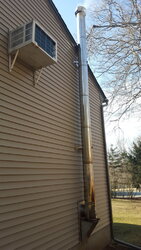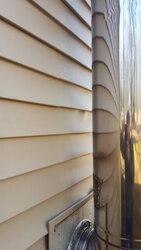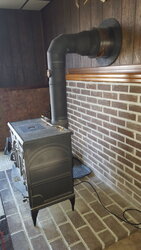
 I put up a new 8" Supervent stainless steel double wall insulated chimney last fall. I just noticed the vinyl siding behind it is starting to deform. I used their mounting kit and wall brackets. The chimney consists of a through the wall tee with six 36" sections above it. I also noticed that the first section off the tee is discolored and if you tap on it it rings like an oil drum. Behind that section is where the siding is melting. If you tap on the next section up you just hear a thud. Is it possible for the insulation in the pipe to degrade with the heat?
I put up a new 8" Supervent stainless steel double wall insulated chimney last fall. I just noticed the vinyl siding behind it is starting to deform. I used their mounting kit and wall brackets. The chimney consists of a through the wall tee with six 36" sections above it. I also noticed that the first section off the tee is discolored and if you tap on it it rings like an oil drum. Behind that section is where the siding is melting. If you tap on the next section up you just hear a thud. Is it possible for the insulation in the pipe to degrade with the heat?
Last edited:


